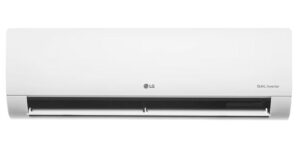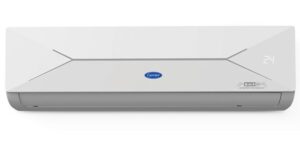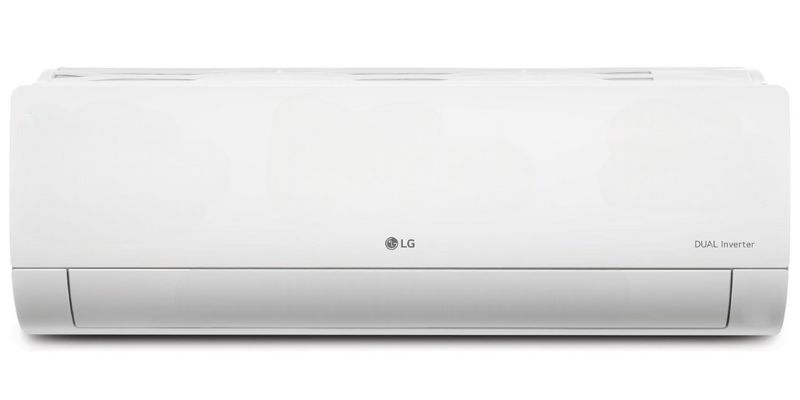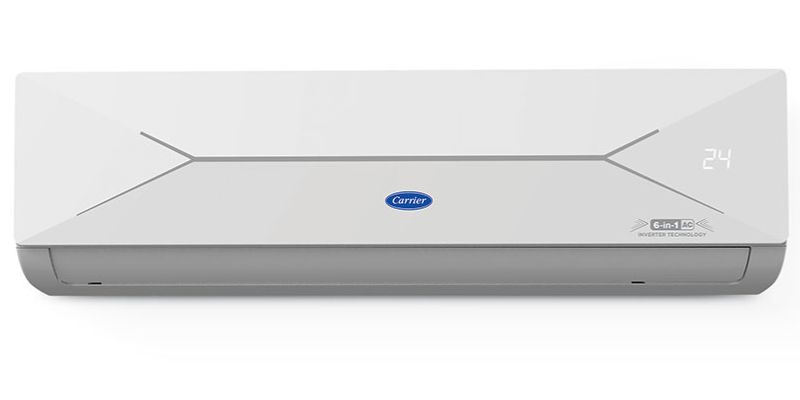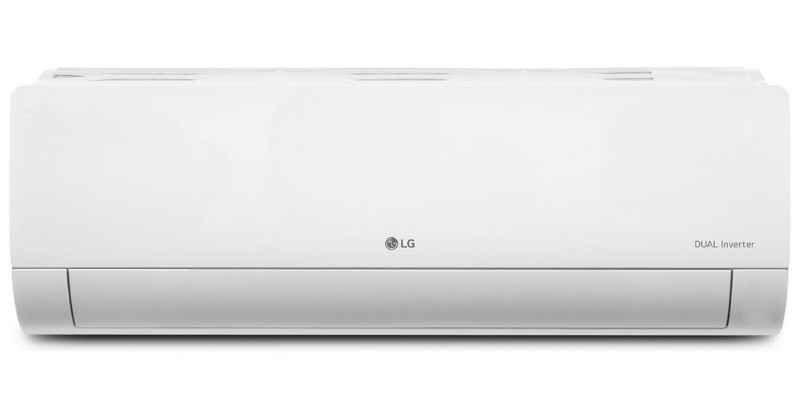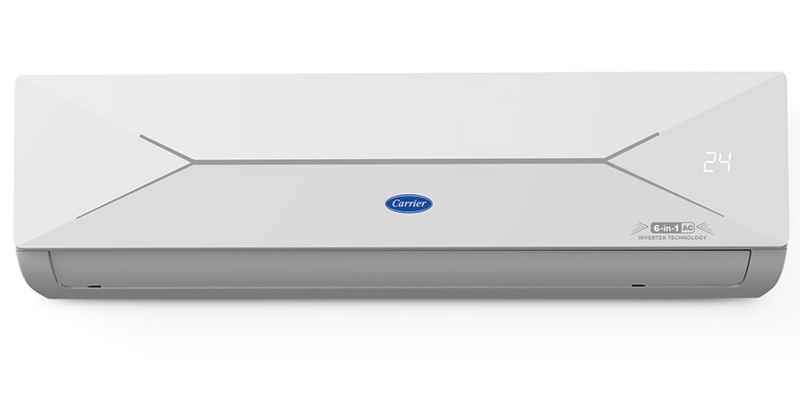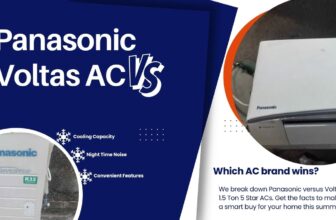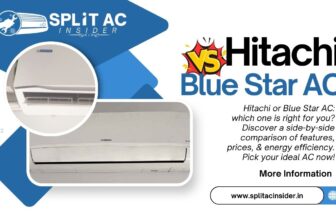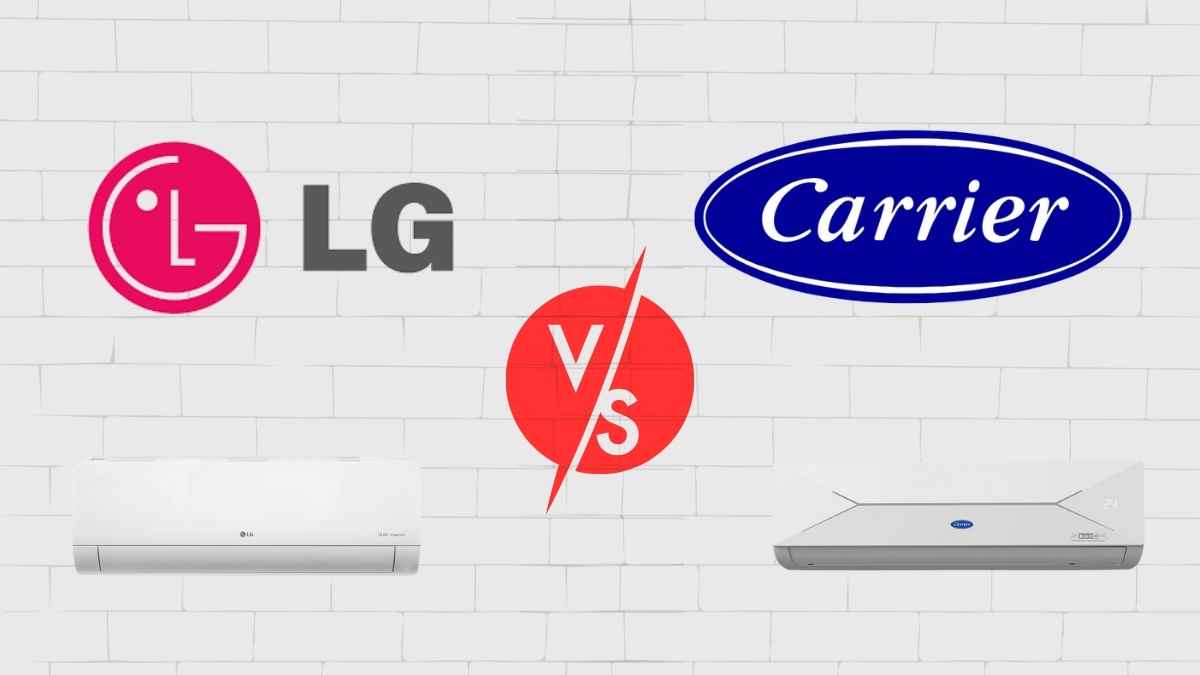
LG vs. Carrier — both of these names have been commanding presence in the air conditioning market for decades, but what has each brand done with their years of cooling expertise?
Despite their similar market positioning, LG and Carrier have both grown into distinctively different brands.
With some overlap in AC types, these brands have quite a few differences in technology and feature specifics.
The guide below will dive into different available models from each brand, and compare like products between the two names.
Check the links below for more details on the comparison
LG Air Conditioners Overview
LG has decades of cooling innovation under its belt, with a wide selection of models and advanced features available.
While LG started in the consumer electronics market, it has since expanded into premium cooling solutions, including dual inverter split ACs, AI-enabled models, multi-tonnage convertible units, and even voice-controlled smart systems.
Carrier Air Conditioners Overview
Similar to LG, Carrier has also been around for quite a long time—over 100 years, in fact. Carrier ACs today include all major cooling capacities—1 ton, 1.5 ton, 2 ton, and even commercial units.
There is a wide variety of Carrier model options as well as price ranges. Features range from basic 3-star inverter units to advanced Wi-Fi enabled, Flexicool convertible systems with 6-in-1 cooling modes.
Both LG and Carrier are going to be more premium-positioned than some brands, like basic window ACs or even some of the lower-end split units. Most Carrier and LG air conditioners fall into the moderate-to-premium price tiers, even for their standard models.
LG vs. Carrier 1.5 Ton Air Conditioners
Both LG and Carrier have similar lineups, but there are a few key differences between each brand name.
Aesthetically, these ACs have modern designs that complement contemporary interiors, with LG offering Magic Display LED panels and Carrier featuring Hidden Display technology.
Compared to Daikins, Mitsubishis, or even select Panasonic air conditioners, LG and Carrier are generally positioned competitively for the features they offer.
With their premium features, comes exceptional performance and efficiency, with many options to choose from.
LG US-Q19PWZE 5 Star
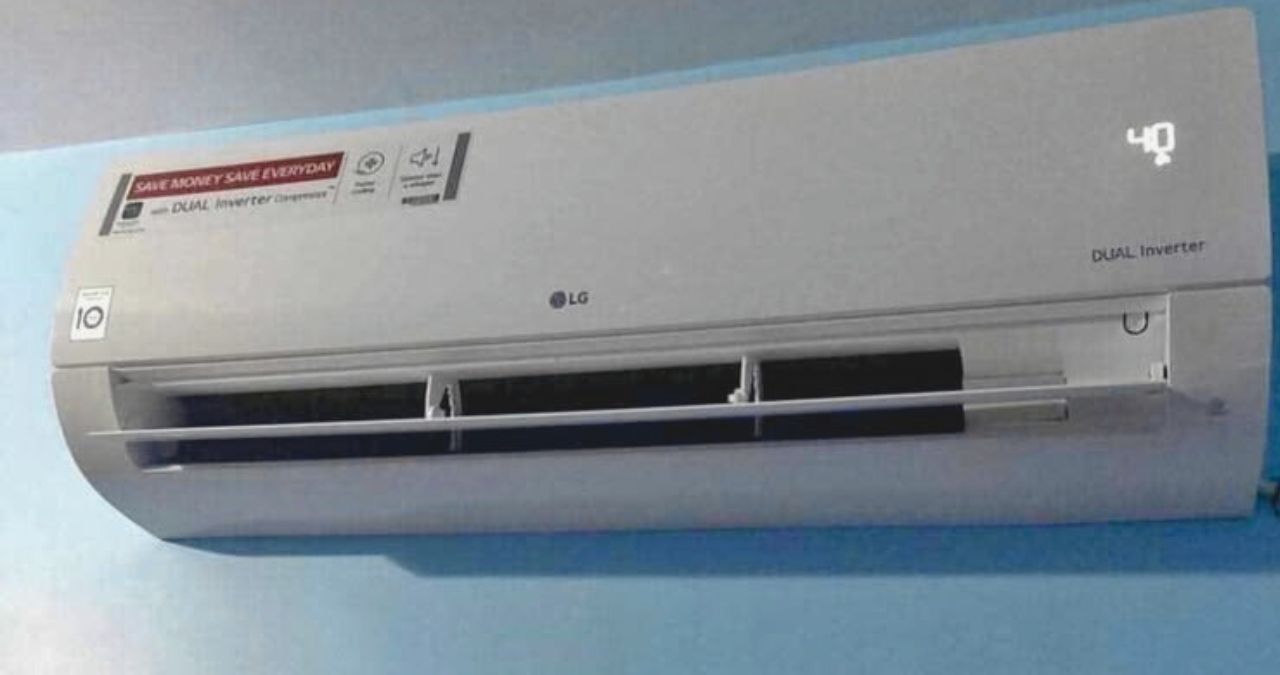
• Capacity: 1.5 Ton (111-150 sq.ft)
• Annual Consumption: ~744.75 units
• Maintenance: ~Standard filter cleaning
• Weight: 11 kg (indoor), 28.5 kg (outdoor)
The LG US-Q19PWZE is a premium dual inverter split AC that’s super efficient and has AI capabilities—hello future of cooling. With 5.20 ISEER rating this AC performs well and keeps your electricity bills in check.
The LG DUAL Inverter range has multiple models and capacities but this 5 star model seems to be the most efficient.
The “PWZE” in the model name indicates the advanced features that comes with this model like VIRAAT mode for 116% cooling capacity, AI Convertible 6-in-1 modes and Ocean Black Protection. It also has standard features like auto clean function and HD filter with anti-virus protection.

One of the unique feature of LG US-Q19PWZE is the AI driven cooling optimization. This allows the AC to adjust tonnage based on room occupancy and activity levels. This feature is similar to smart cooling in premium models but LG’s implementation is more refined.
Carrier CAI19EE5R35W0 5 Star
- Capacity: 1.5 Ton (111-150 sq.ft)
- Annual Consumption: ~754.05 units
- Maintenance: ~Standard filter cleaning
- Weight: 10.1 kg (indoor), 25.5 kg (outdoor)
The Carrier Flexicool Smart Wi-Fi AC is a perfect blend of tradition and innovation.
Nice features of Carrier Flexicool include Wi-Fi control, Flexicool 6-in-1 convertible technology, PM 2.5 filtration and voice control.
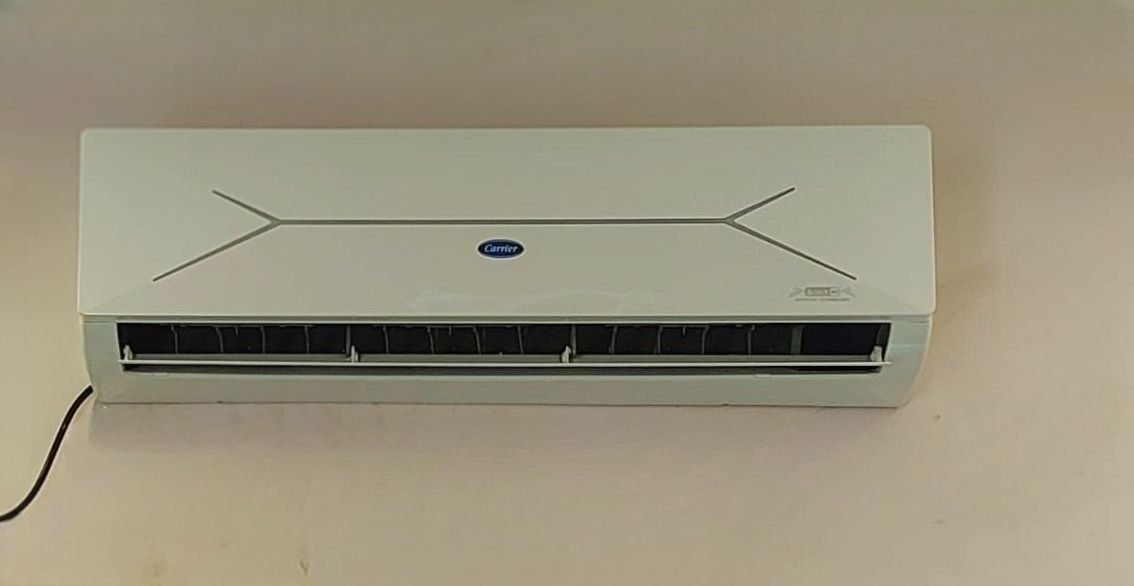
Benefits include 120% cooling capacity and full filtration. Hydro Blue Coating provides great corrosion protection especially in coastal areas.
You can control this AC with voice commands with Alexa or Google Assistant if you have compatible devices.
Pros
• Built-in Wi-Fi with voice control compatibility
• 120% maximum cooling capacity with Insta Cool
• Dual filtration with PM 2.5 filter
Cons
• Slightly higher energy consumption than LG equivalent
• Lower maximum operating temperature (52°C vs 55°C)
• 2-way swing versus LG’s 4-way swing
LG US-Q18JNXE 3 Star
• Capacity: 1.5 Ton (111-150 sq.ft)
• Annual Consumption: ~852.44 units
• Maintenance: ~Standard filter cleaning
• Weight: 8 kg (indoor), 24.5 kg (outdoor)
The LG US-Q18JNXE 3-star model is a more affordable model with dual inverter technology, and this makes advanced cooling available to consumers with a limited budget.
The dual inverter compressor makes the performance stable and saves energy, and the AI Convertible 6-in-1 feature allows flexibility in cooling modes. This model also works effectively at 55°C ambient temperature.
LG 3-star dual inverter split AC
Special features include Ocean Black Protection for copper tubes, Gold Fin+ coating for increased durability, and comprehensive protection with stabilizer-free operation from 120V-290V.
The lighter weight design makes installation easier, and the lower noise level of just 26 dB ensures peaceful operation.
Pros
• Affordable entry into dual inverter technology
• Exceptionally quiet operation at 26 dB
• Lighter weight for easier installation
Cons
• Higher energy consumption than 5-star models
• No Wi-Fi connectivity or smart features
• Basic 2-way air swing instead of 4-way
Carrier CAI18EE3R35W0 3 Star
• Capacity: 1.5 Ton (111-150 sq.ft)
• Annual Consumption: ~952.68 units
• Maintenance: ~Standard filter cleaning
• Weight: 10 kg (indoor), 25.5 kg (outdoor)
Ester Edge FXi brings smart connectivity to 3-star segment with Wi-Fi control and advanced features at an affordable price.
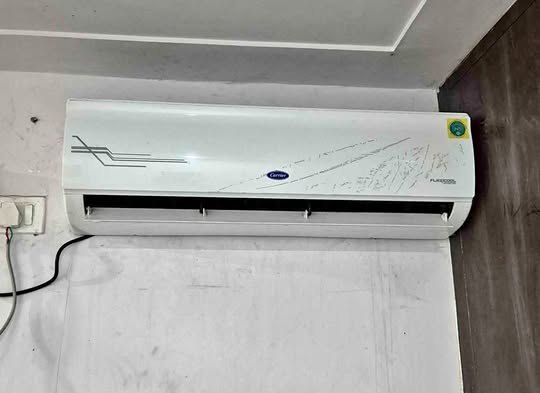
This model comes with Flexicool 6-in-1 technology where you can adjust cooling capacity from 40% to 120% as per your need. Insta Cool feature gives instant cooling when you need it the most.
Hidden Display maintains the looks, dual filtration with PM 2.5 filter ensures clean air. Voice control for tech savvy users.
Hydro Blue Coating and Aqua Clear Protection work together to prevent corrosion and moisture accumulation, prolongs the life of the unit.
Pros
• Wi-Fi enabled with voice control at 3-star price
• 120% maximum cooling capacity
• Hidden Display
Cons
• Highest energy consumption in this comparison
• 52°C operating temperature
• Noisy than LG equivalent
LG vs. Carrier 1 Ton Air Conditioners
When it comes to compact cooling solutions, LG and Carrier both have options for smaller spaces. LG focuses on efficiency, while Carrier emphasizes smart connectivity.
There is a good selection of energy ratings and features, some with advanced AI modes, some with basic cooling, and a variety of price points as well. The table below provides a high-level comparison of the popular 1-ton models between the two brands.
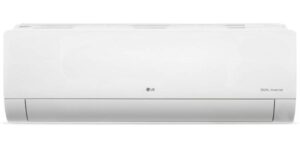
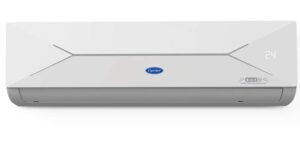
LG US-Q14YNZE 5 Star
• Capacity: 1 Ton (up to 110 sq.ft)
• Annual Consumption: ~515.84 units
• Maintenance: Standard filter cleaning
• Weight: 8 kg (indoor), 24.5 kg (outdoor)
The LG 1-ton 5-star model delivers exceptional efficiency with 5.25 ISEER rating, making it ideal for small bedrooms or study rooms. Considering its compact size, I’ve gotta admit, the efficiency numbers are impressive. But in the battle for energy savings, it really provides outstanding performance.
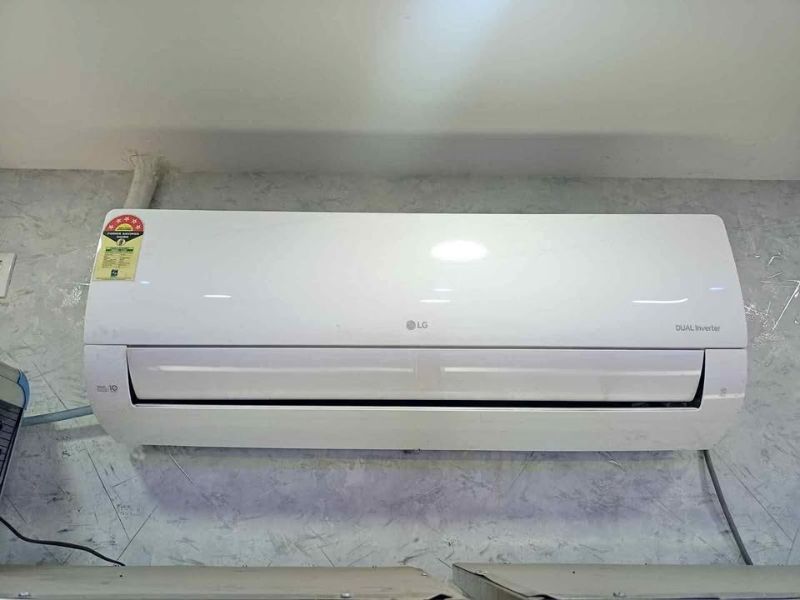
Features include 4-way air swing for uniform cooling, ultra-quiet 21 dB operation and 6-speed fan control. VIRAAT mode gives instant cooling when you need it.
Smart Diagnosis System for quick troubleshooting and Diet Mode Plus for minimal energy consumption during long hours of use.
10 year compressor warranty with gas charging during the entire warranty period.
Carrier CAI12EE5R35W0 5 Star
• Capacity: 1 Ton (up to 110 sq.ft)
• Annual Consumption: ~536.30 units
• Maintenance: Standard filter cleaning
• Weight: 8.3 kg (indoor), 21.7 kg (outdoor)
Carrier 1-ton Wi-Fi model also has smart features. This one combines efficiency with connectivity, 5.05 ISEER rating with full app control. Looks sleek with hidden display, clean look that matches modern interiors.
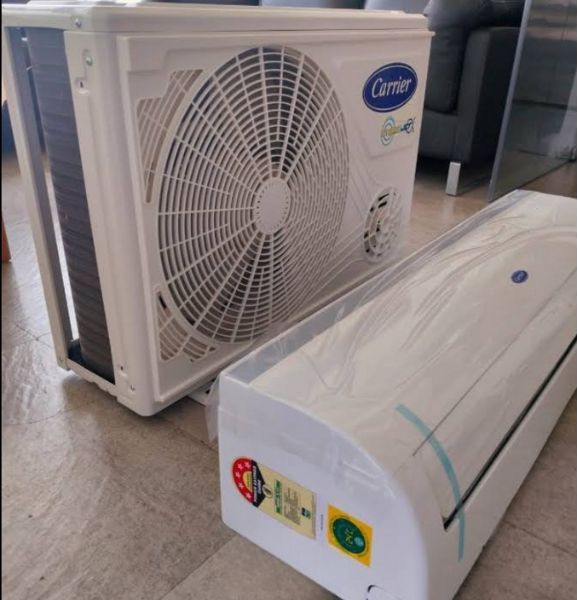
Flexicool 6-in-1 technology allows capacity adjustment from 40% to 120%, Wi-Fi connectivity for remote operation and scheduling. Quieter at 32 dB on low speed.
Auto Cleanser function for hygiene, dual filtration for clean air delivery. Voice control for modern convenience.
For most, smart connectivity is worth the efficiency trade-off.
Also, the lighter outdoor unit at 21.7 kg is good for easier installation or wall-mounting considerations.
LG vs. Carrier 2 Ton Air Conditioners
The world of large-capacity cooling is a comfortable one for both LG and Carrier, offering powerful options for spacious rooms.
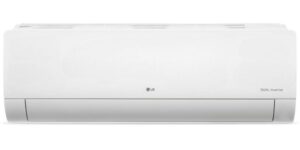
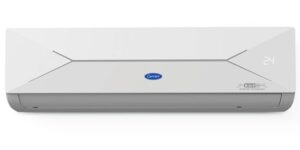
LG and Carrier 2-ton models are meant to cool a larger space with their high cooling capabilities. The majority of them are inverter types with convertible characteristics, which allows them to be flexible in cooling requirements.
These high-powered units have a variety of cooling options and flexible performance optimization depending on room conditions. Some even have boost modes when it is really bad weather.
LG TS-Q24ENXE 3 Star
• Capacity: 2 Ton (211-230 sq.ft)
• Annual Consumption: ~1220.4 units
• Maintenance: Standard filter cleaning
• Weight: 11 kg (indoor), 38 kg (outdoor)
The LG 2-ton model is powerful for large rooms with 6300W capacity, expandable to 110% when needed. Unlike smaller models, this is designed for big spaces that need more cooling power.
It has a 15-meter air throw for large areas. It comes with AI Convertible 6-in-1 technology, 4-way air swing, Gold Fin+ coating and 6-speed fan control. The design allows for flexible installation and air distribution.
Runs at 52°C ambient temperature with stabilizer free operation between 120V-290V to ensure reliability in any environment.
The AI modes allow you to control cooling depending on the occupancy of the room to operate efficiently.
Carrier CAI24EE3R35W0 3 Star
• Capacity: 2 Ton (up to 200 sq.ft)
• Annual Consumption: ~1249.82 units
• Maintenance: Standard filter cleaning
• Weight: 12.5 kg (indoor), 28 kg (outdoor)
Carrier 2-ton Wi-Fi model provides smart-control of big space cooling with Flexicool technology and app functions.
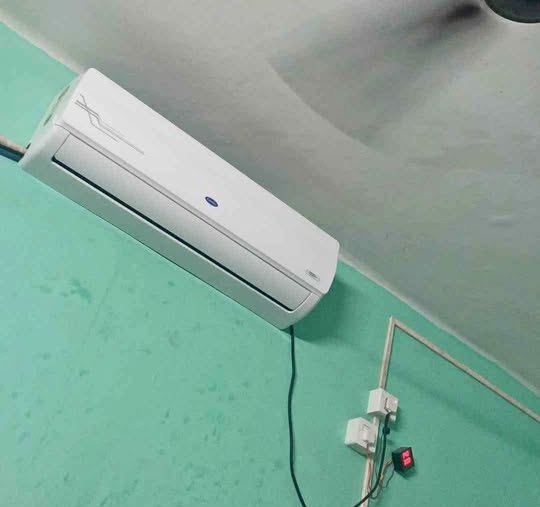
Maximum cooling 6900W with 120% boost mode, 6300W normal mode. Smart capabilities are scheduling, voice control, energy monitoring via app.
Dual filtration with PM 2.5 filter for air quality, Hydro Blue Coating for corrosion protection. Hidden Display for clean look and necessary information.
Comes with standard accessories remote control, user manual, warranty documentation.
LG vs. Carrier Smart Features
The table below will outline the smart capabilities that both LG and Carrier offer in their modern AC lineups.


Neither LG nor Carrier is exceptionally behind in technology adoption. As the IoT and integration of smart homes have evolved, both brands have responded differently to the market needs.
Of course, this is not to say that traditional controls are obsolete. For many users, on-board controls and remote operation suffice perfectly.
LG Smart Features
• AI Convertible: 6-in-1 cooling modes
• VIRAAT Mode: ~116% capacity boost
• Smart Diagnosis: ~Quick troubleshooting
• Diet Mode Plus: Energy optimization
The LG approach is all about on-board intelligence not connectivity. It has AI that adjusts cooling based on room conditions without user intervention.
Compared to app based controls, LG’s AI operates independently, learns usage patterns and optimizes accordingly.
Smart Diagnosis enables service technicians to diagnose problems with the use of smartphone applications and minimizes service time.
Unlike the app dependent solution of Carrier, LG is all about being autonomous with intelligent algorithms taking care of cooling efficiency.
Pros
• AI driven automatic optimization requires no user input
• Works without internet connectivity
• Advanced diagnostic capabilities reduce service time
Cons
Can’t integrate with smart home
Carrier Smart Features
• Wi-Fi Control: Full app connectivity
• Voice Commands: ~Alexa/Google compatible
• Remote Scheduling: ~Set from anywhere
• Energy Monitoring: Track usage via app
The Carrier smart system uses Wi-Fi for advanced features. You can control your AC from anywhere with internet access. Convenience at its best.
The app has scheduling, temperature control, mode selection and energy monitoring. Voice control integration means hands free operation when paired with smart speakers.
SMART VS. AI | Smart features vs. AI: What’s the difference? Smart features connect your AC to the internet for remote control. AI uses artificial intelligence to automatically cool without user input.
The Carrier app gives you detailed energy consumption data to help you understand and optimize your usage.
Pros
App Control
Voice control integration (Alexa and Google Home)
Energy monitoring and usage reports
Cons
App dependent functionality
Privacy concerns with cloud connected devices
Is LG or Carrier better for you?
So LG vs. Carrier—is one better than the other?
Not necessarily.
Choose LG if:
- You want maximum energy efficiency
- You want AI powered automatic optimization
- Quiet operation is important
- You want advanced self diagnosis features
Choose Carrier if:
- You want manual control over cooling modes
- Smart Wi-Fi connectivity is a must
- You prefer traditional cooling technology
- You want good value with reliable performance
Both are good brands but LG is better in energy efficiency and features while Carrier is good in performance with user friendly smart controls at affordable price.

